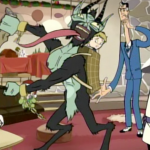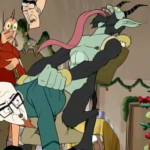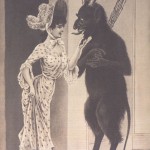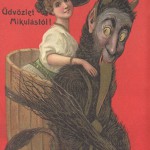Context: SF is a USC sophomore studying journalism and he’s also my classmate in Anthropology class. I decided to have a zoom meeting with him and talk about some folklore from vermont.
SF: Vermont has this big lake named Lake Champlain which is the next biggest lake after the great lakes.. Between vermont and new york
SF: People believe there is this dinosaur or sea monster named champ living at the bottom of the lake because there have been a bunch of sightings… uh and like some very fake pictures.. But you know people like to believe
SF: And uh yeah the local baseball team is named after him and they’ve scanned the lake for it but um I don’t think they’ve found anything yet
YM: They’ve actually scanned it ?
SF: Yeah they scan like part of it, it’s really murky and for a really long time it was really badly polluted by paper mills.. So there’s a lot of algae blooms and it’s really hard to see in it which is kinda disgusting but also adds to the mystery of it
SF: It’s supposed to be like yeah kinda the same humps in the water and then the head, loch ness sorta vibe.. Big dinosaur
YM: Do you know of anyone who claims to have seen it ?
SF: My cousin and I thought we saw it but we were like seven hahaha
YM: ahahah awww
SF: It was definitely a stick.. The people are into it.. It’s a cool story to have.. But uhh yeah no proof yet
YM: who did you hear this from
SF: My grandparents actually lived by the lake and they told me about it when I was a kid… but it’s very prevalent in the community and you’ll see little cartoon drawings of it in Burlington which is the main city, every now and then
Analysis: Champ is a mythical creature that lives at the bottom of Lake Champlain, it seems to be an important part of the community since a lot of people believe in this lake monster to the point where the lake has actually been scanned. There have been more than three hundred sightings of this creature since 1609. Real or not it has definitely been something that distinguishes Vermont, since not all states have a “20 ft long serpent, thick as a barrel.” The belief in this creature has also been passed down for generations and has even created a revenue generating attraction since the local baseball team uses it as their mascot. After some research, there is even a “champ day” on the first saturday of every August. It’s clear that this monster brings a sense of identity and representation for people in Vermont.








